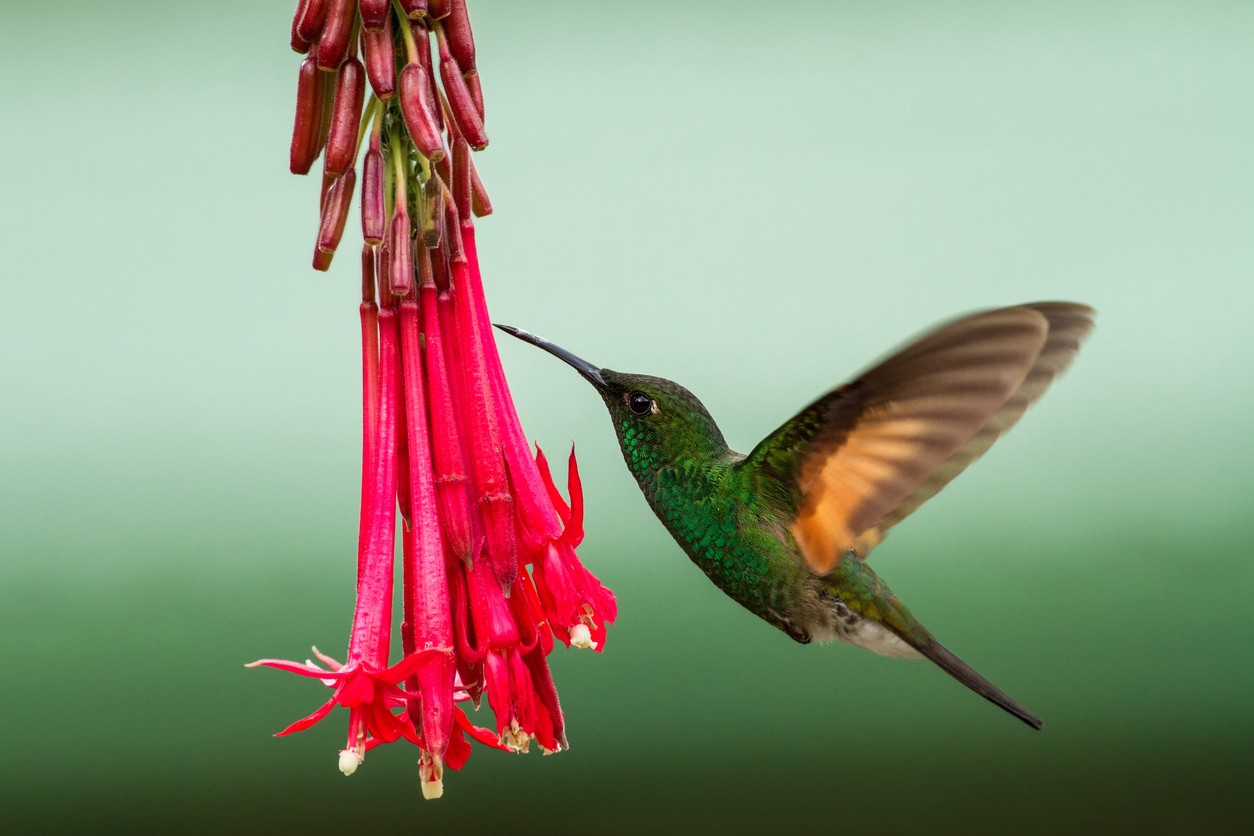Band-tailed Barbthroat
A species of Barbthroats Scientific name : Threnetes ruckeri Genus : Barbthroats
Band-tailed Barbthroat, A species of Barbthroats
Botanical name: Threnetes ruckeri
Genus: Barbthroats
Content
Description General Info

Description
The band-tailed barbthroat (Threnetes ruckeri) is a medium-sized hummingbird which is a resident breeder from southeastern Guatemala and Belize to western Ecuador and western Venezuela. This hermit species inhabits the understory of wet forests, woodland edges and old second growth. It occurs in the lowlands, typically up to an elevation of 800 m, although young birds may wander higher. The nest is a cup of plant fibres attached 2–4 m high on the underside of a Heliconia or sometimes a banana leaf. The female alone incubates the two white eggs. The band-tailed barbthroat is 10.2–11 cm long and weighs 5–5.8 g. it has a long decurved bill, and, as with other hermit hummingbirds, the sexes are similar. The adult has bronze-green upperparts, a dark ear patch and dusky malar stripe. The chest is rusty-orange and the underparts are otherwise grey. Young birds resemble the adult, but have buff feather tips. The southern subspecies T. r. venezuelensis is somewhat duller on the breast than the nominate northern race. The band-tailed barbthroat has a high thin tseep call, and the male's song, given alone or at a lek, is a didiDIT dew dew in the Caribbean lowlands, but on the Pacific side the song is longer and includes trills and warbles. Like other hermits, this barbthroat visits widely separated flowers including: Heliconia, Costus, and bananas, and the male is less aggressively territorial than other male hummingbirds. 
Size
11 cm
Nest Placement
Tree
Feeding Habits
Band-tailed Barbthroat primarily feed on nectar, complemented by small arthropods and spiders. They exhibit specialized foraging by hovering and utilizing their long tongues to extract nectar, while also adeptly capturing insects in mid-air or from webs.
Habitat
Band-tailed Barbthroat typically inhabits the understorey of both primary and disturbed forests, often near forest edges. This species thrives in areas of dense second growth, semi-open shrubbery, thickets, and various plantation types. It also frequents habitats in close proximity to rivers, adapting to a range of vegetation-rich environments. Geographically, band-tailed Barbthroat is found in tropical regions, occupying territories from sea level up to elevations of approximately 1200 meters.
Dite type
Nectivorous
General Info
Feeding Habits
Bird food type


Scientific Classification
Phylum
Chordates Class
Birds Order
Swifts and hummingbirds Family
Hummingbirds Genus
Barbthroats Species
Band-tailed Barbthroat